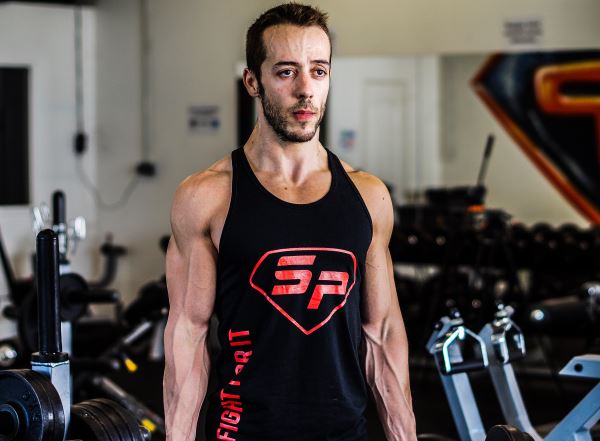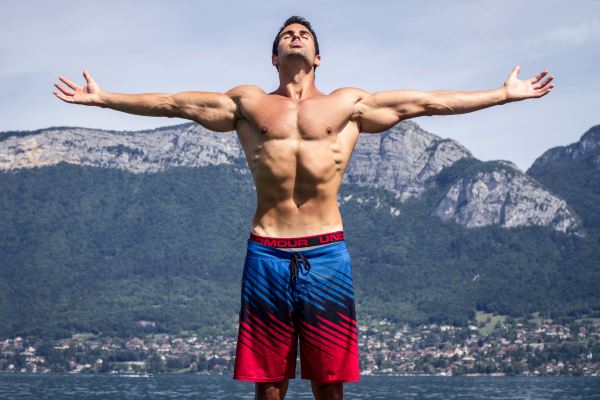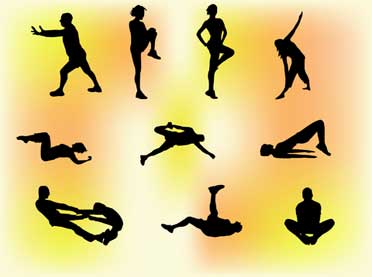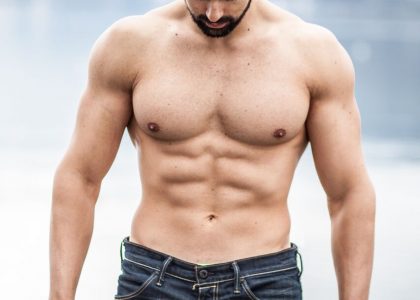What is a multi-joint exercise? Advantages and disadvantages. How to adapt polyarticular exercises to your morphology?
Some people think that it is enough to do an exercise that works the whole muscles so that they develop evenly.
Therefore, I invite you to see in this article why the practice of multi-joint exercises is not enough for harmonious muscle development.
1 – Bodybuilding – Polyarticular Exercise: Definition
First of all, it should be determined that multi-joint exercises are not necessarily basic exercises.
As you can see from the article: Bodybuilding – tension / length ratio, the main exercise is an exercise that uses this factor, namely: always keeping the muscle in a position close to where it is strongest, the more likely to make a strong contract.
A multi-joint exercise is now an exercise that works on multiple muscles. Therefore, for one of them it will be fundamental, but for others it will not.
So, if we take the bench press example (whatever is needed here for the demonstration), this is a basic exercise for the triceps (really, feel free to read my linked article again above to understand), but it is not for chest, nor for shoulders. Sometimes it stretches them to the side of their inserts and their ends, and then shortens them as we push them, bringing their two attachment points closer together.
If we take another example, pull-ups, which are the main exercise for the biceps, but not for the back and trapezius muscles.
Therefore, in this article, we will be happy to talk about multi-joint exercises involving several joints and therefore several muscles, without any consideration of using the length ratio, which is also not of interest to explain!
You can find out more about the effects of the parabolan by following this link https://buysteroidsgroup.net/steroid-injections/parabolan/

2 – Bodybuilding – Polyarticular Exercise: Competitiveness Challenge
Polyarticular exercises are the most effective exercises because of the stresses that can be handled by using multiple muscles together to develop muscles in bodybuilding.
This makes sense! We lift harder on the bench press than on spreads that try to isolate the pectoral muscles from the triceps.
But this is the best of all worlds. When we choose a muscle exercise, it is important that the exercise works well for the muscles we want, because multiple muscles work at the same time in the exercises.
Obviously, when you do the bench press (to continue with an example that speaks to almost all of you), only one of the three major agonist muscles that make the movement will actually develop.
If I take my own case, when I do this exercise in bodybuilding, I take almost everything in the chest and almost nothing in the shoulders and triceps.
This is related to what I explain in Genetics and Bodybuilding (1/2) and Genetics and Bodybuilding (2/2), that is, the length of your different muscles in between and the length of the thickness of your bones.
So, if you have long enough pectoral muscles with a small clavicle width, pectoralis major, deltoids, and fairly short triceps, you will be using your pectoral muscles every time you bench press.
No problem here if you do the bench press.
But on the other hand, if you were doing a solid bench press or a triceps press, given your “morphology”, I would bet that you will have more congested pectoral muscles than these first ones.
Overload is not a factor to be looked for at all costs in strength training, but it is great feedback after a series of what you just worked on. A muscle that doesn’t swell after an exercise that is supposed to work doesn’t really work (unless you are doing very short bursts, but in this case we are moving away from the goal of building muscle and working on a particular muscle is not interesting). I talk about this in more detail in bodybuilding congestion.
Remember, however, that if you are a beginner and do not have a good level, such as the Gold level at SuperPhysique Club, it may be okay not to overload or almost. The lack of muscle, so to speak, severely limits stagnation, and we have never seen stagnant bone. So be patient and know that this article is geared more towards intermediate practitioners than beginners. Do not put the cart in front of the horse.
Take the opposite example. You have large collarbones, a fairly flat ribcage, very long deltoid muscles that hang over your pectoral muscles (which in theory are also visible in your collarbones, but you never know), and very long triceps that drop well to your elbows.
In this case, there is a 99%, if not 100%, chance that the bench press will mainly target your shoulders and triceps rather than your pecs.
I took the bench press as an example because it is common for many people. Be careful, however, that the lack of overload is not due to poor analysis on your part, such as lack of flexibility or poor technique that is easy to find elsewhere.
I could take examples of other multijoint exercises such as squats (a competition between the quadriceps, gluteus and hamstrings), pull-ups (a competition between the back, trapezius, biceps, and forearms). .. Any multi-joint exercise. Let me remind you again that if you want to know which exercises work in theory, follow the link: Bodybuilding Exercises.
3 – Bodybuilding – Polyarticular Exercise: What Should We Do?
If multi-joint exercises don’t work the way you want, you can’t prioritize the exercise on the right muscle (because muscle gain is primarily a history of muscle isolation, then progression. – Progress in an exercise that works not the way you want it, will force you to gain strength only in what works in a priority order), you will need to consider several things.
3-1. Customize your working range
If we continue with our previous example, stretching the muscle will contract.
If you have the wrong “morphology” of the pectoral muscles during the bench press, despite good flexibility and good technique (I insist), you will have to limit the work on the shoulders and triceps as much as possible.
To do this, you need to reduce the low amplitude of the exercise (not by chance, but with a reliable reference so that you can do the same movement in every session and plan your progress), and you stop before you feel that your the shoulders will stretch and interfere. This will be your individual constraint so that the bench press becomes an exercise for your pecs, not your deltoids!
It won’t be too much to limit the intervention of the triceps if you don’t extend your arms with each rep, so as not to reinforce existing contractions due to the use of tension / exercise duration and length ratio.
Let’s take a second example: squat!
If you have long hips and a small bust compared to a very long gluteus muscle that drops low to the thigh, the more we will sink, and the more this exercise will work on the buttocks due to the quadriceps muscle, which is usually a priority exercise, the reason why you do it.
So, just like with the bench press in bodybuilding, you will need to find your amplitude by decreasing the descent to limit the stretch of the gluteus muscles as much as possible so that the exercise remains as localized as possible on your quadriceps.
This is pretty easy here, because at this point it’s determining the optimal amplitude for your quadriceps if you’re doing squats, right before you have to tilt your chest forward (which will stretch your glutes and use them more than your thigh).
Therefore, reducing the amount of stretching is often a very good idea when multi-joint exercises don’t work the way you want them to.

3-2 – choose the right exercises for you
Put it in your head, no exercise is important, no!
I know it’s hard not to do the bench press (example) because it’s the benchmark exercise in many gyms, but it’s important to know why you’re training and then determine what you should do.
If your goal is to get strong with the bench press, then the question is not to ask about the presence or absence of this exercise in your program with the usually marked amplitude of the stretch, touching the ribs with a bar for each rep.
But if your goal is to build muscle on the pectoral muscles, then the bench press at “normal” amplitude does not contribute to this and that the decrease in amplitude does not work either (perhaps, but rarely) then you will undoubtedly find your happiness with other exercises that will then effectively work your pectoral muscles in bodybuilding.
Leave your ego in the dressing room and learn to work intelligently in accordance with your goals and objectives!
There is no point in striving for something that will not help you, on the contrary.
3-3 – use amplification techniques
As explained in my respective articles:
is an introduction to bodybuilding,
is bodybuilding after fatigue.
Using these two techniques (in modified form) in addition to the previous two parameters can help you target the right muscles in core exercises and thus help you progress and build muscle!
Remember, there are always solutions when something goes wrong.
4 – Bodybuilding – Polyarticular Exercises: Conclusion
In this article, we deliberately did not cover the concepts of amplitudes in isolation exercises, which are explained and demonstrated in detail in my e-books and trainings.
However, I hope I gave you an understanding of this concept of competitiveness in multi-joint bodybuilding exercises and the need to re-examine anatomy and be able to analyze yourself for better training, better progress, etc. you become better!
If you have any questions, do not hesitate, I would be happy to answer you as usual!
Good workout for everyone.





